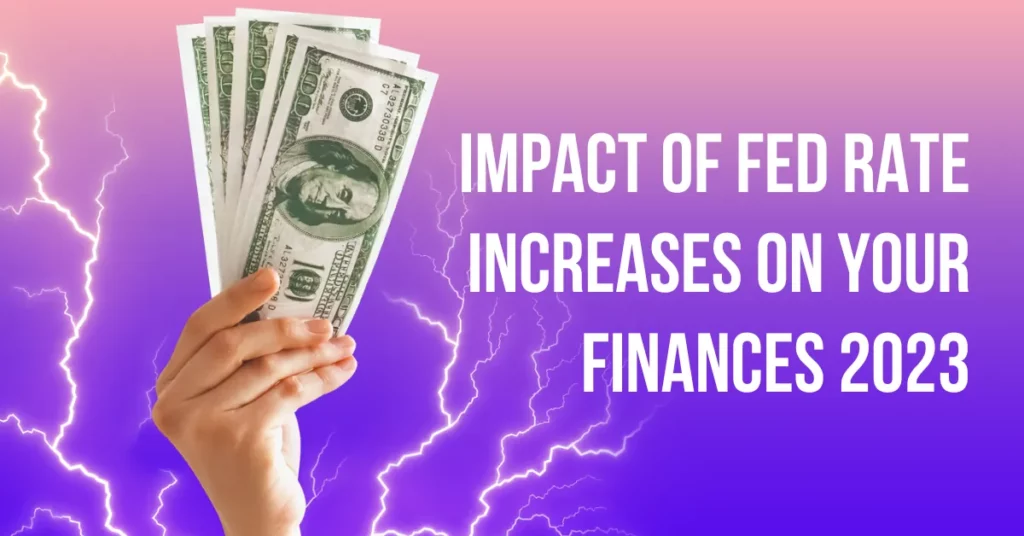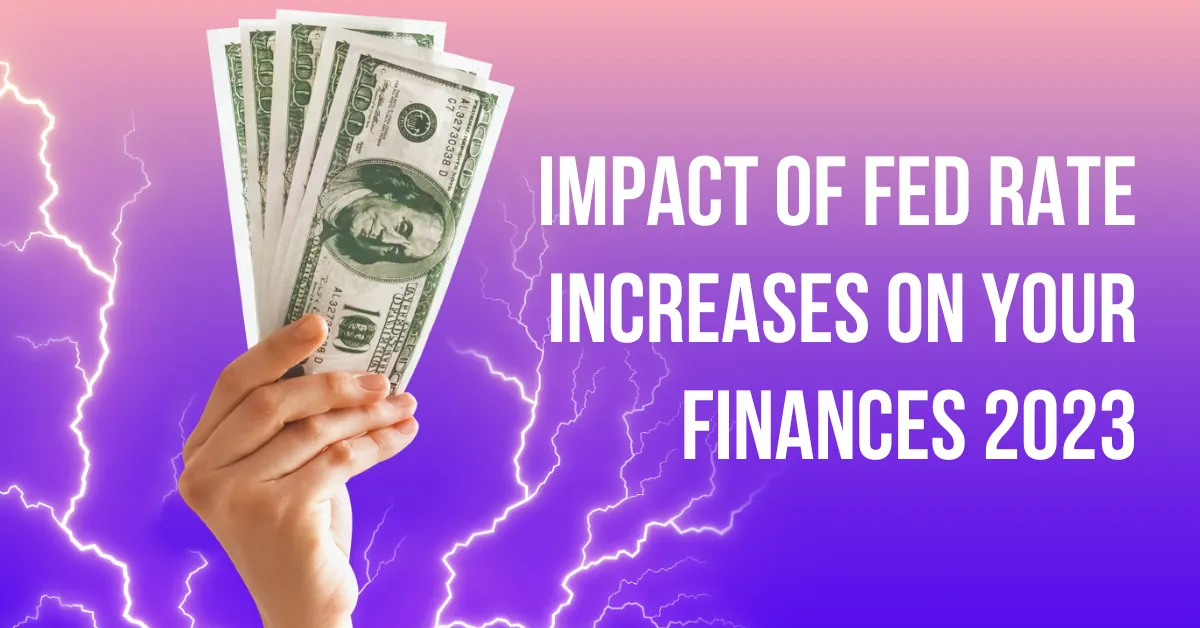The Federal Reserve (Fed) is responsible for setting monetary policy in the United States. One of the tools the Fed uses to manage the economy is adjusting the federal funds rate, which is the interest rate at which banks lend money to each other overnight.

When the Fed raises the federal funds rate, it can have an impact on the borrowing costs for consumers and businesses alike. In this article, we’ll explore what Fed rate increases mean for mortgages, credit cards, and more.
How Fed Rate Increases Affect Mortgages
Mortgage rates tend to be influenced by the overall interest rate environment in the economy. When the Fed raises the federal funds rate, it can indirectly impact mortgage rates by causing lenders to raise their own borrowing costs. This can lead to higher mortgage rates for consumers looking to buy a home or refinance an existing mortgage.
To illustrate this impact, let’s take a look at some historical data. In 2018, the Fed raised interest rates four times. As a result, mortgage rates also increased throughout the year. According to data from Freddie Mac, the average 30-year fixed-rate mortgage increased from 3.95% at the beginning of the year to 4.94% by November.
If you’re in the market for a mortgage, it’s important to keep an eye on interest rate trends and work with a lender to get the best possible rate for your financial situation.
How Fed Rate Increases Affect Credit Cards
Credit card interest rates are typically tied to the prime rate, which is the interest rate that banks charge their most creditworthy customers. When the Fed raises the federal funds rate, it can cause the prime rate to increase as well. This can lead to higher interest rates on credit card balances for consumers who carry a balance from month to month.
To see this impact in action, let’s again turn to historical data. In 2018, the Fed raised interest rates four times, and the prime rate increased from 4.50% at the beginning of the year to 5.50% by the end of the year. As a result, credit card interest rates also increased throughout the year. According to data from the Federal Reserve, the average credit card interest rate rose from 14.99% in the first quarter of 2018 to 16.46% in the fourth quarter.
If you carry a balance on your credit card, it’s important to be aware of interest rate trends and try to pay off your balance as quickly as possible to avoid paying more in interest over time.
How Fed Rate Increases Affect Auto Loans
Like mortgage rates, auto loan rates can be influenced by the overall interest rate environment. When the Fed raises the federal funds rate, it can cause lenders to raise their own borrowing costs, which can lead to higher interest rates for auto loans.
However, the impact of Fed rate increases on auto loans can be less significant than the impact on other types of loans. This is because auto loans are typically secured by the vehicle being purchased, which can provide lenders with some protection against default. As a result, auto loan interest rates may not increase as much as other types of loan interest rates in response to Fed rate increases.
How Fed Rate Increases Affect Savings Accounts
While Fed rate increases can lead to higher borrowing costs for consumers, they can also lead to higher interest rates on savings accounts. When the Fed raises the federal funds rate, it can cause banks to pay more in interest to their customers who have savings accounts or other deposit accounts.
However, it’s important to note that the impact of Fed rate increases on savings account interest rates can be small. This is because banks may not always pass on the full impact of Fed rate increases to their customers. In addition, savings account interest rates are typically lower than other types of interest rates, so even if rates do increase, the impact on your savings may be minimal.
Key Takeaway
Fed rate increases can have a significant impact on the economy and on consumers’ borrowing and savings costs. It’s important to be aware of interest rate trends and to work with lenders and financial institutions to get the best possible rates for your financial situation. If you have outstanding debts, such as credit card balances, it’s a good idea to try to pay off those debts as quickly as possible to avoid paying more in interest over time.
In addition, if you’re saving money, it’s important to shop around for the best possible savings account rates and to consider other investment options, such as stocks, bonds, and mutual funds, which can provide higher returns over the long term.
Overall, staying informed and taking proactive steps to manage your finances can help you navigate changes in the economy and ensure that you’re making the most of your money.



